Acting on Impulse
Men just can’t help acting on Impulse …
This was the advertising strapline that accompanied the 1982 introduction of a new ‘body mist’ perfume by Fabergé. It was accompanied by a rather cheesy {{1}} set of TV commercials with surprised looking (presumably fragrant) women being accosted by strange men proffering bouquets of flowers {{2}}.
And, it turns out that women – or, more specifically, female worker honey bees – also act on impulse.
In this case, these are the ‘impulses’ that result in the production of queen cells in the colony.
Understanding these impulses, and how they can be exploited for queen rearing or colony expansion (or, conversely, colony control), is a very important component of beekeeping.
The definition of the word impulse is an ‘incitement or stimulus to action’.
The action, as far as our bees are concerned, is the development of queen cells in the colony.
If we understand what factors stimulate the production of queen cells we can either mitigate those factors – so reducing the impulse and delaying queen cell production (and if you’re thinking ‘swarm prevention‘ here you’re on the right lines) – or exploit them to induce the production of queen cells for requeening or making increase.
But first, what are the impulses?
There are three impulses that result in the production of queen cells – supersedure, swarm and emergency.
Under natural conditions i.e. without pesky meddling by beekeepers, colonies usually produce queen cells under the supersedure or swarm impulse.
The three impulses are:
- supersedure – in which the colony rears a new queen to eventually replace the current queen in situ.
- swarm – during colony reproduction (swarming) a number of queen cells are produced. In due course the current queen leaves heading a prime swarm. Eventually a newly emerged virgin queen remains to get mated and head the original colony. In between these events a number of swarms may also leave headed by virgin queens (so-called afterswarms or casts).
- emergency – if the queen is lost or damaged and the colony rendered queenless, the colony rears new queens under the emergency impulse.
Many beekeepers, and several books, state that you can determine the type of impulse that induced queen cell production by the number, appearance and location of the queen cells.
And, if you can do this, you’ll know what to do with the colony simply by judging the queen cells.
If only it were that simple
Wouldn’t it be easy?
One or two queen cells in the middle of frame in the centre of the brood nest? Definitely supersedure. Leave the colony alone and the old queen will be gently replaced over the next few weeks. Brood production will continue uninterrupted and the colony will stay together and remain productive.
A dozen or more sealed queen cells along the bottom edge of a frame? The colony is definitely in swarm mode and – since the cells are already capped – has actually already swarmed. Time to thin out the cells and leave just one to ensure no casts are also lost.
But it isn’t that simple 🙁
Bees haven’t read the textbooks so don’t necessarily behave as expected.
I’ve found single open queen cells in the middle of a central frame, assumed it was supersedure, left the colony alone and lost a swarm from the hive a few days later 🙁
D’oh!
Or I’ve found loads of capped queen cells on the edges of multiple frames in a hive, assumed that I’d missed a swarm … only to subsequently find the original marked queen calmly laying eggs as I split the brood box up to make several nucleus colonies 🙂
Not all queen cells are ‘born’ equal
It’s worth considering what queen cells are … and what they are not. And how queen cells are started.
There are essentially two ways in which queen cells are started.
They are either built from the outset as vertically oriented cells into which the queen lays an egg, or they start their life as horizontally oriented {{3}} worker cells which, should the need arise, are re-engineered to face vertically.
Queen cells started under the supersedure or swarming impulse are initially created as ‘play cups‘. A play cup looks like a small wax version of an acorn cup – the woody cup-like structure that holds the acorn nut. In the picture above the play cup is located on the lower edge of a brood frame, but they are also often found ‘centre stage‘ in the middle of the frame.
A colony will often produce many play cups and their presence is nothing to be concerned about. In fact, I think it’s often a rather encouraging sign that the colony is sufficiently strong and healthy that it might be thinking of raising a new queen.
Before we leave play cups and consider how emergency queen cells start life it’s worth emphasising the differences between play cups and queen cells.
Play cups are not the same as queen cells
Until a play cup is occupied by an egg it is not a queen cell.
At least it’s not as far as I’m concerned 😉
And, even if it contains an egg there’s no guarantee it will be supported by the workers to develop into a new queen {{4}}.
However, once the cell contains a larva and it is being fed by the nurse bees – evidenced by the larva sitting in an increasingly thick bed of royal jelly – then it is indisputably a queen cell.
And to emphasise the fundamental importance in terms of colony management I usually refer to this type of queen cell as a ‘charged queen cell’.
Once charged queen cells appear in the colony, all other things being equal, they will be maintained by the workers, capped and – on the 16th day after the egg was laid – will emerge as a new queen.
And it is once charged queen cells are found in the colony that swarm control should be considered {{5}}.
But let’s complete our description of the queen cells by considering those that are produced in response to the emergency impulse.
Emergency queen cells
Queen cells produced under the emergency impulse differ from those made under the swarm or supersedure impulse. These are the cells that are produced when the colony is – for whatever reason – suddenly made queenless.
Without hamfisted beekeeping it’s difficult to imagine or contrive a scenario under which this would occur naturally {{6}}, but let’s not worry about that for the moment {{7}}
The point is that, should a colony become queenless, the workers in the colony can select one or more young larvae already present in worker cells and rear them as new queens.
So, although the eggs are (obviously!) laid by the queen {{8}}, they have been laid in a normal worker cell. To ensure that they get lavished with attention by the nurse bees, feeding them a diet enriched in Royal Jelly, the cell must be re-engineered to project vertically downwards.
Location, location
Queen cells can occur anywhere in the hive to which the queen has access.
But they are most usually found on the periphery of the frame, either along the lower edge …
… or a vertical side edge of the frame …
… but they can also be found slap, bang in the middle of a brood frame.
And remember that bees have a remarkable ability to hide queen cells in inaccessible nooks and crannies on the frame … and that finding any queen cells is much more difficult when the frame is covered with a wriggling mass of worker bees.
Location and impulses
Does the location tell us anything about the impulse under which the bees generated the queen cell?
Probably not, or at least not reliably enough that additional checks aren’t also needed 🙁
Many descriptions will state that a small number (typically 1-3) of queen cells occupying the centre of a frame are probably supersedure cells.
Whilst this is undoubtedly sometimes or even often true, it is not invariably the case.
The workers choose which larvae to rear as queens under the emergency impulse. If the only larvae of a suitable age are situated mid-frame then those are the ones they will choose.
In addition, since generating emergency cells requires re-engineering worker cells, newer comb is likely more easily manipulated by the workers.
Some beekeepers ‘notch’ comb under suitably aged larvae to induce queen cell production at particular sites on the frame {{9}}. The photograph shows a frame of eggs with a notch created with the hive tool. It’s better to place the notch underneath suitably aged larvae, not eggs. Clearly, the age of the larvae is more critical than the ease with which the comb can be reworked. Those who use this method [PDF] properly/extensively claim up to a 70% ‘success’ rate in inducing queen cell placement on the frame. This can be very useful if the plan is to cut the – well separated – queen cells out and use them in mating nucs or for requeening other colonies.
Comb at the bottom or side edges of the frame often has space adjacent and underneath it. Therefore the bees might favour these over sites mid-frame (assuming ample suitable aged larvae) simply because the comb is easier to re-work in these locations.
And don’t forget … under the emergency impulse the colony preferentially chooses the rarest patrilines to rear as new queens {{10}}.
Not all larvae are equal, at least when rearing queens under an emergency impulse.
Active queen rearing and the three impulses
By ‘active’ queen rearing I mean one of the hundreds of methods in which the beekeeper is actively involved in selecting the larvae from which a batch of new queens are reared.
This doesn’t necessarily mean grafting , towering cell builders and serried rows of Apidea mini nucs.
It could be as simple as taking a queen out of a good colony to create a small nuc and then letting the original colony generate a number of queen cells.
Almost all queen rearing methods use either the emergency or supersedure impulses to induce new queen cell production {{11}}.
For example, let’s consider the situation described above.
Active queen rearing and the emergency impulse
A strong colony with desirable traits (calm, productive, prolific … choose any three 😉 ) is made queenless by removing the queen on a frame of emerging brood into a 5 frame nucleus hive. With a frame of stores and a little TLC {{12}} the queen will continue to lay and the nuc colony will expand.
But the, now queenless, hive will – under the emergency impulse – generate a number of new queen cells. These will probably be distributed on several frames if the queen was laying well before she was removed.
The colony will select larvae less than ~36 hours old (i.e. less than 5 days since the egg was laid) for feeding up as new queens.
If the beekeeper returns to the hive 8-9 days later it can be split into several 5 frame nucs, each containing a suitable queen cell and sufficient emerging and adherent bees to maintain the newly created nucleus colony {{13}}.
Active queen rearing and the supersedure impulse
In contrast, queenright queen rearing methods such as the Ben Harden system exploit the supersedure impulse.
In this method suitably aged larvae are offered to the colony above the queen excluder. With reduced levels of queen pheromones present – due to the physical distance and the fact that queen cannot leave a trail of her footprint pheromone across the combs above the QE – the larvae are consequently raised under the supersedure impulse.
I’m always (pleasantly) surprised this works so well. Queen cells can be produced just a few inches away from a brood box containing a laying queen, with the workers able to move freely through the queen excluder.
Combining impulses …
Finally, methods that use Cloake or Morris boards {{14}} use a combination of the emergency and supersedure impulses.
In these methods the colony is rendered transiently queenless to start new queen cells. About 24 hours later the queenright status is restored so that cells are ‘finished’ under the supersedure response.
The odd one out, as it’s not really practical to use it for active queen rearing, is the swarming impulse. Presumably this is because the conditions used to induce swarming are inevitably rather difficult to control. Active queen rearing is all about control. You generally want to determine the source of the larvae used and the timing with which the queen cells become available.
Environmental conditions can also influence colonies on the brink of swarming … literally a case of rain stopping play.
Acting on impulse
If there are play cups in the colony then you don’t need to take any action {{15}}, but if there are charged queen cells present then your bees are trying to tell you something.
Precisely what they’re trying to tell you depends upon the number and position of the queen cells, the state or appearance of those cells, and the state of the colony – whether queenright or not.
What you cannot do {{16}} is decide what action to take based solely on the number, appearance or position of the queen cells you find in the colony.
Is the colony queenright?
Are there eggs present in the comb?
Does the colony appear depleted of bees?
If there are lots of sealed queen cells, no eggs, no sign of the queen and a depleted number of foragers then the colony has probably swarmed.
Frankly, this is pretty obvious, though it’s surprising the number of beekeepers who cannot determine whether their colony has swarmed or not.
But other situations are less clear …
If there are a small number of charged queen cells, eggs, a queen and a good number of bees in the hive then it might be supersedure.
Or the colony might swarm on the day the first cell is sealed 🙁
How do you distinguish between these two situations?
Is it mid-May or mid-September? Swarming is more likely earlier in the season, whilst supersedure generally occurs later in the season.
But not always 😉
Is the queen ‘slimmed down’ and laying at a reduced rate?
Much trickier to determine … but if she is then they are likely to swarm.
Decisions, decisions 😉 … and going by the number of visits to my previous post entitled ‘Queen cells … don’t panic!‘ there are lots of beekeepers trying to make these decisions right now 🙂
{{1}}: Meaning ‘sentimental and/or dramatic, yet superficial and unconvincing’ for those not familiar with the expression.
{{2}}: And was otherwise notable for being the first UK TV advert featuring a same sex couple in 1998.
{{3}}: Not entirely true, as the cells in comb actually slope upwards slightly (~14°) from the sealed end to the open end to prevent nectar running out before it is capped.
{{4}}: If you mark a frame with play cups containing eggs and re-check them at the following inspection you’ll sometimes find them unoccupied again … the queen laid the egg, but in the intervening time the workers decided to remove it (or the larva that hatched from it).
{{5}}: If it’s a cell started under the swarm impulse … but I’m getting ahead of myself.
{{6}}: As a biologist it’s interesting to consider the evolutionary pressure that resulted in this ability … my guess is that it is a by-product of some other aspect of queen rearing behaviour as I don’t think unmanaged colonies suddenly find themselves queenless sufficiently frequently for the selection pressure to be strong enough. I may well be wrong … I’m not an evolutionary biologist so it’s little more than ill-informed guesswork.
{{7}}: And, while we’re not worrying about it, let’s also be very thankful that they do have the ability to rear new queens when suddenly rendered queenless. If they didn’t it would make beekeeping much more difficult … or leave thousands of hives irreversibly queenless.
{{8}}: Of course, there’s always an exception to the rule … check out the unpronounceable thelytokous parthenogenesis exhibited by Cape honey bees.
{{9}}: It’s worth noting here that my experience of this is limited and mixed.
{{10}}: Or, at least, the rarest patrilines are over-represented in queens reared under the emergency impulse, which is not the same thing at all. It might be some form of weird and obscure larval competition that accounts for this, rather than overt worker selection, but the end result is the same.
{{11}}: I’ve qualified this with an almost, but cannot think of an exception … see below.
{{12}}: Tender loving care, for my international readers … which might include adding more brood or bees, depending upon the conditions and time of the season.
{{13}}: This is all rather generic … it is not intended to be a guide to queen rearing.
{{14}}: Watch this space … mine will be in use within the next fortnight or so.
{{15}}: But you might want to review your swarm prevention … has the colony got enough space?
{{16}}: Actually … you can do what you want. What you should not do ….

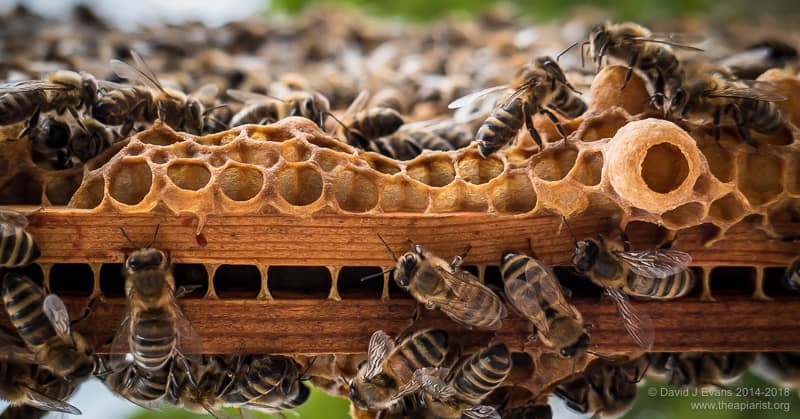
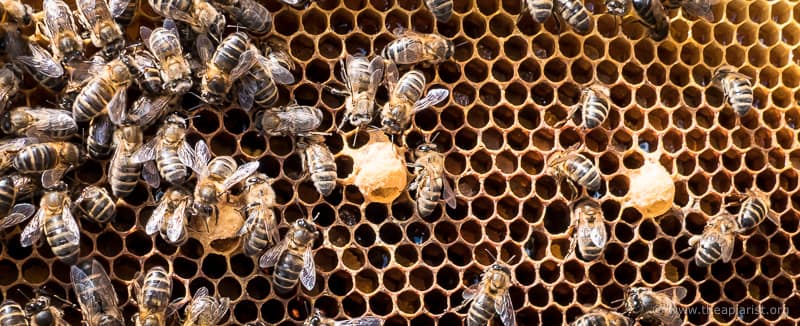
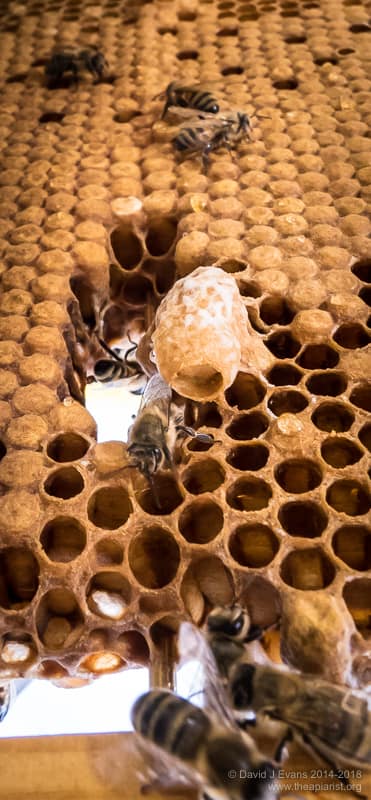
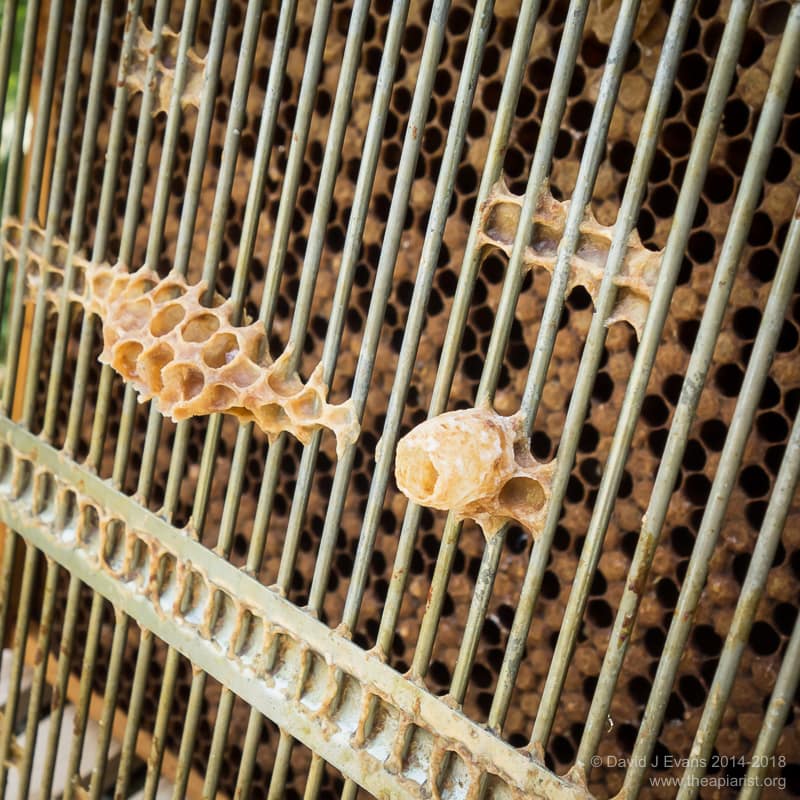
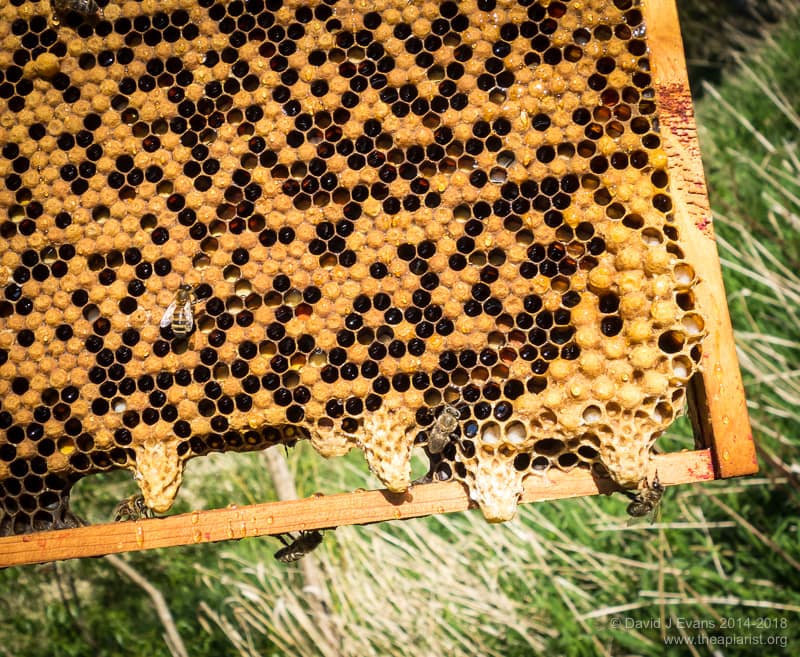
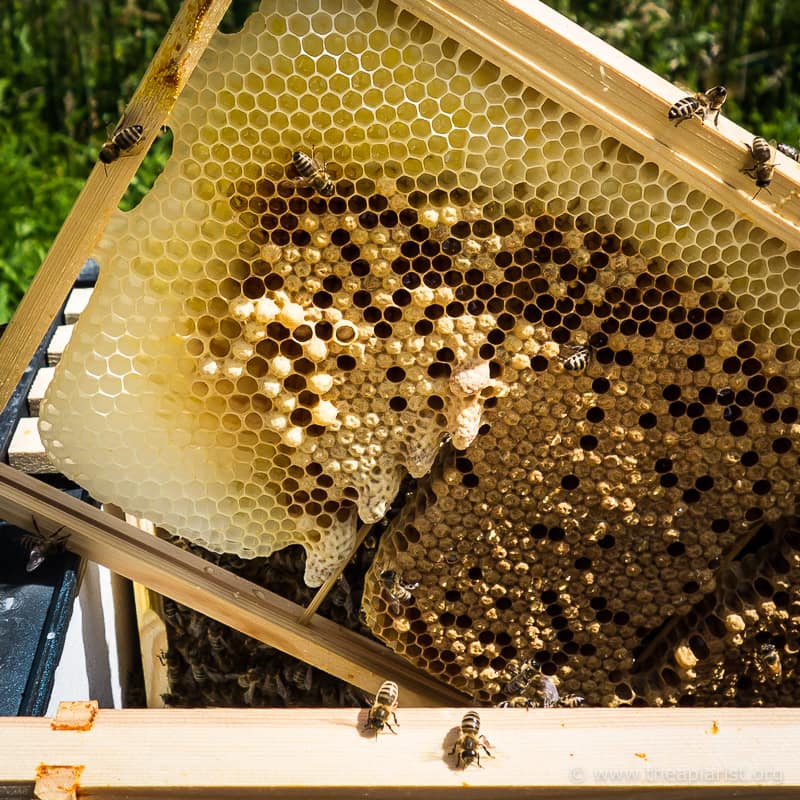
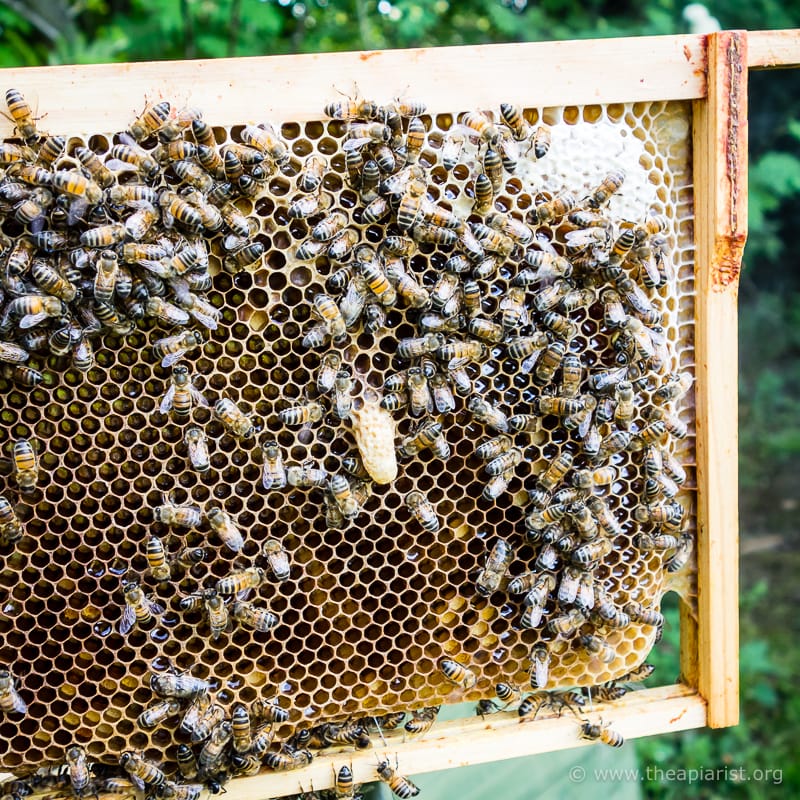
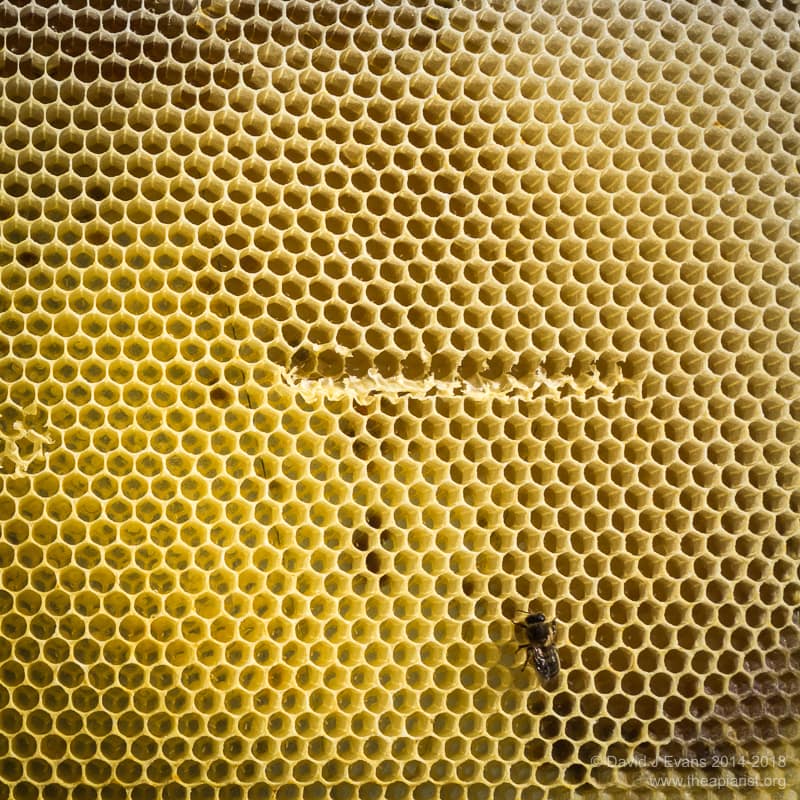
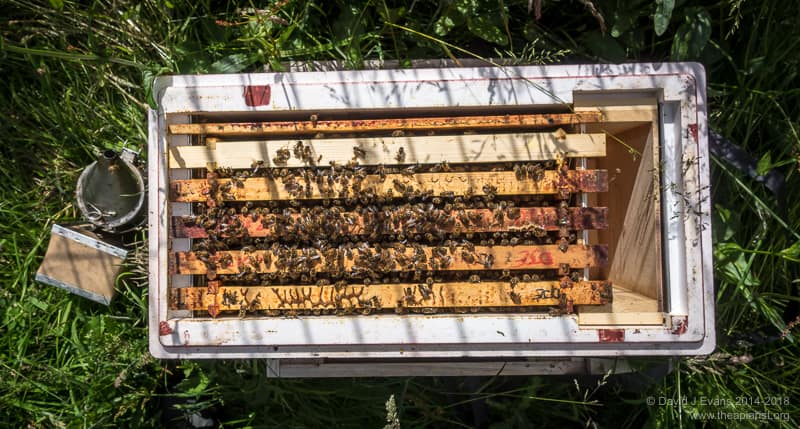
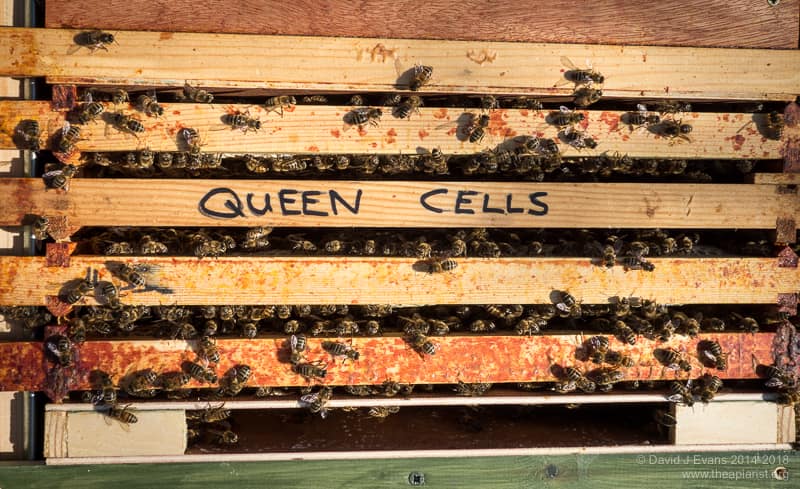
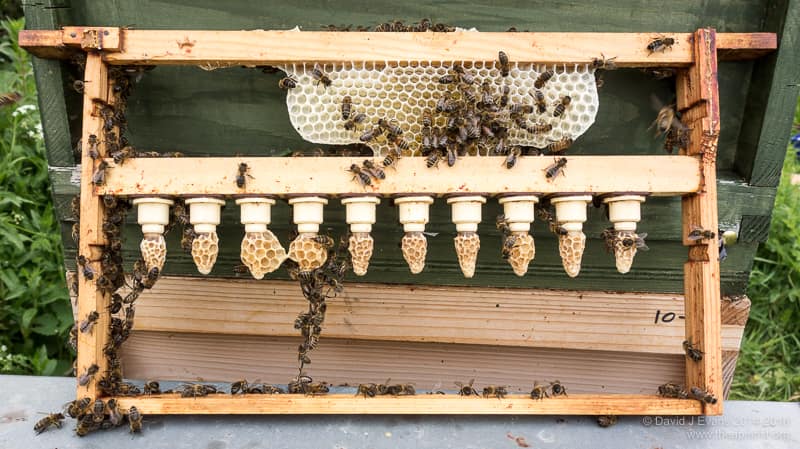
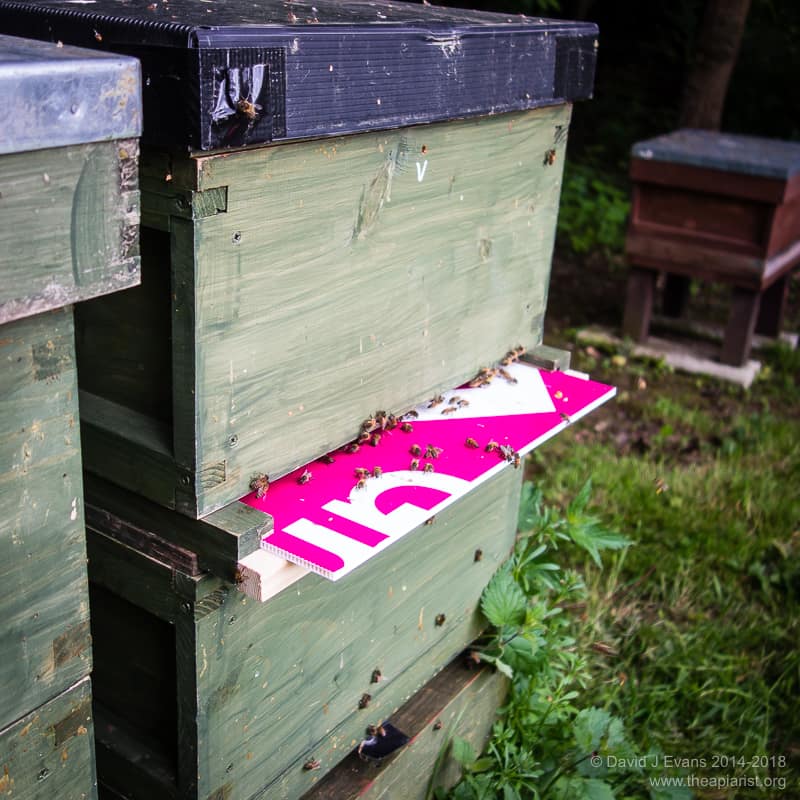
Join the discussion ...